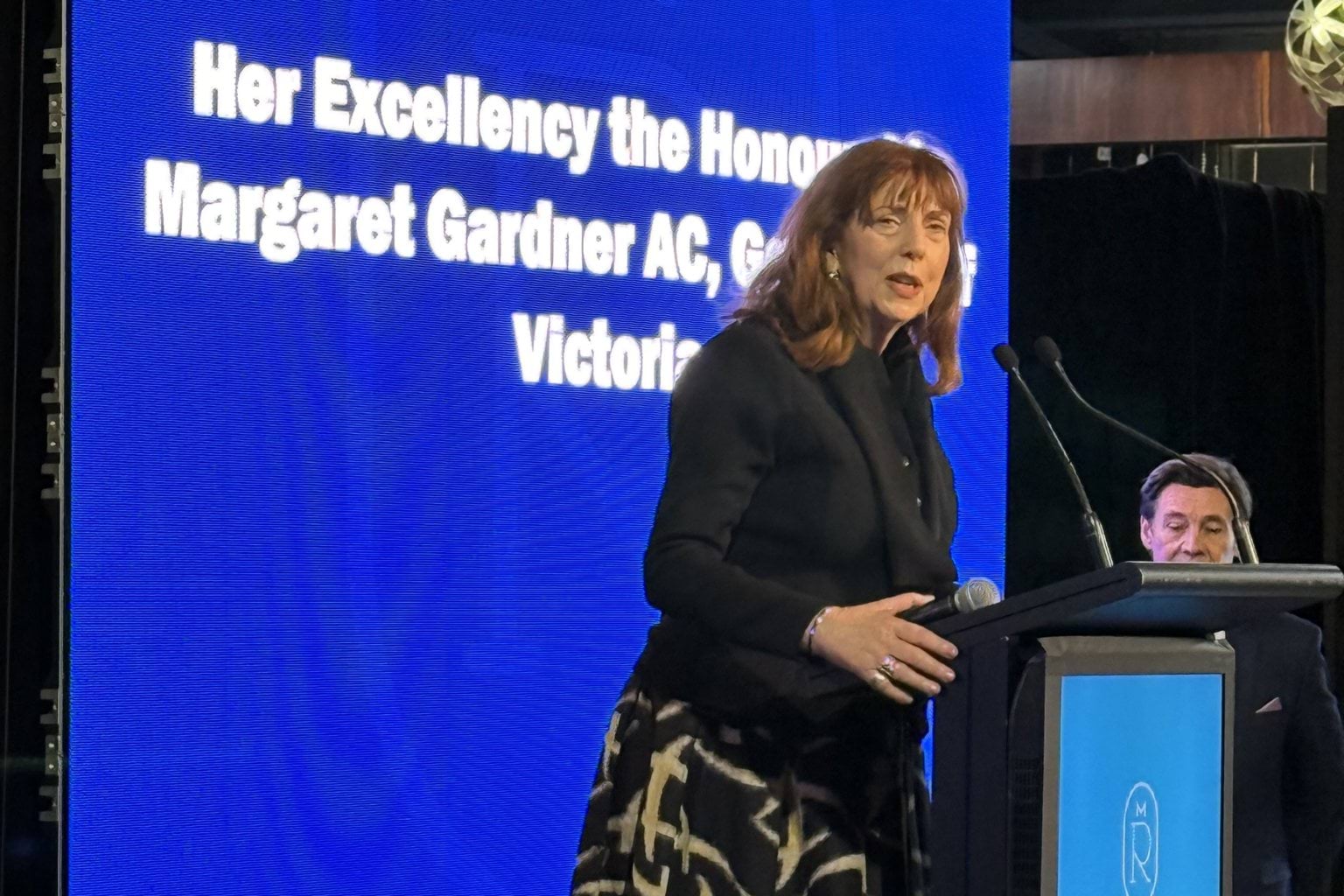- Published:
- Thursday 25 September 2025 at 4:30 pm

I begin by acknowledging the Traditional Owners of the lands on which this building stands – the Wurundjeri people of the Eastern Kulin Nation – and pay my respects to their Elders, past and present.
When we tell stories to ourselves about the momentous and significant events that shaped our State and our nation, the stories of fortunes made, rebellions and the sacrifices of conflict and disasters spring readily to be retold.
The wealth from the Gold Rush in Victoria is such a dramatic tale.
The quiet, sustained achievements are often taken for granted.
Yet the truth is that Victoria’s pastoral prosperity was arguably just as influential in the formation of our modern State.
One of Victoria’s earliest exports occurred in 1836 with a shipment of merino wool – though the cargo consisted of just three bales and travelled only as far as Tasmania (or Van Diemen’s Land, as it was then known).
While deposits of gold were exhausted within decades, Victoria’s agricultural successes have been sustained across generations.
Early farmers often had little more than some pages of handwritten notes and experience to guide their work.
Our strengths today are the result of countless hours of trial and error, of an early reliance on scientific research and its application, and of dedication to refining processes.
Food and fibre remain one of Victoria’s strongest exports today – valued at over $20 billion annually.
When we talk of Victoria’s global reputation, it is frequently through an urban lens – in reference to our higher education institutions, or our major events calendar, or our medical research sector.
These are all valid reasons to be proud of our State, but when you look closely at our agricultural industry, you find a sector equally deserving of domestic pride and international acclaim.
I have the privilege of travelling across our State to visit many of the businesses behind this sector.
From citrus fruits and olives in Mildura, to ducks and merino sheep in the Wimmera, to baby leaf salad and dairy farms in Gippsland – to just last month when I toured the apple and pear orchards of Greater Shepparton.
All of these sectors are at the cutting-edge of innovation and driven by people with a deep passion and expertise.
While I am lucky to get such insights, Victoria’s strengths in this space are sometimes underappreciated by many who call it home.
In the minds of many Victorians, farming is too often something that happens far away – and they therefore do not realise the extent of the quality and quantity of produce made right here.
For over 175 years, the Melbourne Royal Show has helped to bridge the gap between urban and rural, and between understanding and reality.
Everyone who walks though these showgrounds leaves with a greater appreciation of the knowledge and ingenuity that thrives within our farming communities and its adjacent industries.
It’s hard not to be impressed.
Showcasing these strengths in an engaging and inclusive environment ensures that the Show continues to reach a broad audience – but particularly young Victorians.
Anyone who has spent time around children will know that the best way for them to learn is to have them experience things firsthand.
Whether it’s in the animal nursery or in the pavilions – the Show helps young Victorians get immersed in this world while creating lifelong memories in the process.
Of course, the enticement of a sugar hit from a showbag also helps.
I’d like to express my gratitude to everyone who helps create these experiences, and wish everyone competing in the various competitions the best of luck.
In celebrating Victoria’s agricultural strength, it would be remiss of me not to mention another one of our State’s great assets – our depth of volunteering spirit – and thank all those giving their time to make this Show possible.
On that note, as Patron of Melbourne Royal, I am pleased to be here to officially open what I am sure will be another successful Show.
Thank you.
Updated

